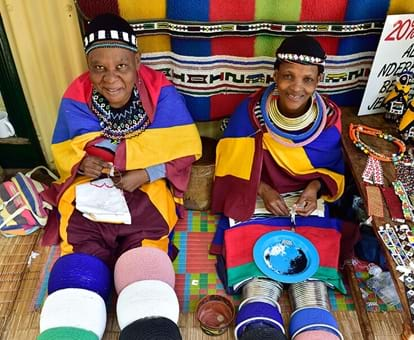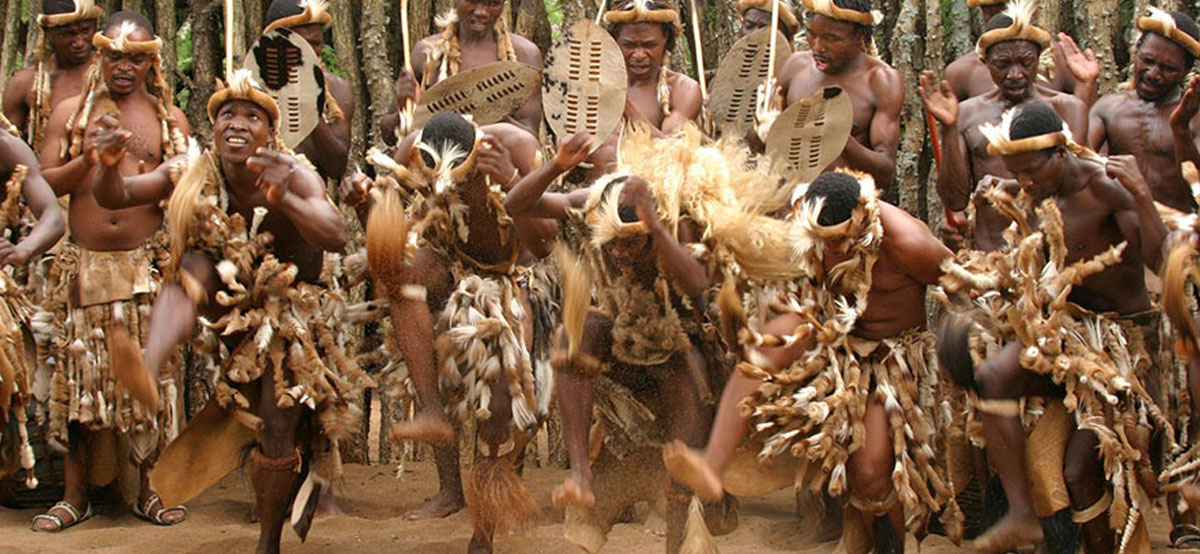The Definitive Guide to South African Culture Today
The Definitive Guide to South African Culture Today
Blog Article
6 Easy Facts About South African Culture Today Described
Table of ContentsThe 8-Second Trick For South African Culture TodayNot known Incorrect Statements About South African Culture Today Some Of South African Culture TodayUnknown Facts About South African Culture TodaySouth African Culture Today Things To Know Before You Get ThisThe Ultimate Guide To South African Culture Today
An issue of importance in Zambian villages is the passing away of liked ones. All participants of the town put money, time and initiative with each other for the funeral of the deceased.Music and dance is an extremely crucial facet of the Zambian society. The numerous tribal devices have their very own dancing kinds; nonetheless, makishi is usual among all people.
The 8-Minute Rule for South African Culture Today
When it comes to songs, drums are utilized the most, with a range of drumming events. In Zambia, majority of individuals are Christian; Protestant and Roman Catholic. There are small teams of Muslims and Hindus, with the remainder complying with local indigenous tribal beliefs.

South African heritage and society is profoundly varied, and includes several groups of people who each have their own customs and ideas. Having such a variety of individuals and societies is what makes South Africa so one-of-a-kind. In the real feeling of the expression, we are a rainbow country.
South Africa has roughly three hundred thousand Portuguese people living in it. Making it the 7th on the list of countries with the most Portuguese individuals in it beyond Portugal. Portuguese is not just a society, yet it is additionally a language and a race. Portuguese individuals stem from the country of Portugal in Europe, nevertheless, because of Portugal (like numerous other countries in Europe) discovering the world and overcoming various other countries during the 15th 20th centuries, South Africa has what we call Portuguese South African's living in it.
The Greatest Guide To South African Culture Today
Among the prominent functions of the topography is a plateau that covers almost 2 thirds of the facility of the country. The plateau facility increases towards the southeast, where it climaxes in the Drakensberg variety, component of an escarpment that divides the plateau from the coastal areas. The Drakensburg consists of Champagne Castle, the highest possible top in the nation.
The region north of the Witwatersrand, called the bushveld, slopes downward from eastern to west toward the Limpopo River, which develops the international border. The western area of the plateau, the middleveld, likewise comes down towards the west and differs in altitude between the highveld and bushveld. In between the Drakensburg and the eastern and southern shoreline, the land descends to the sea.
Nearer the coastline there is a low-lying plain called the eastern lowveld. Southwest of the plateau the country becomes gradually extra arid, paving the way to the stony desert of the Great Karroo, verged on the eastern by the reduced, better watered plateau of the Little Karroo. Separating the dry southern inside from the sandy littoral of the southern coast and West Cape is one more array, the Langeberg.
The 2-Minute Rule for South African Culture Today
The nation's racially, ethnically, and politically split history has produced national and subnational symbols that still function as symbols of the country, and others symbols that are accepted just by certain groups. The monuments to white inhabitant conquest and political prominence, such as the Afrikaner Voortrekker ("pioneer") Monolith in Pretoria and the Rhodes Monolith honoring the British colonial empire builder and Cape head of state Cecil Rhodes, stay sectarian symbols.
The first modern-day residents were the San ("bushman") hunter-gatherers and the Khoi ("Hottentot") peoples, that rounded up livestock visit our website (South African culture today). The San may have existed for hundreds of years and left proof of their existence in countless ancient cavern paintings ("rock art"). Bantu-speaking clans that were the ancestors of the Nguni (today's amaZulu, amaXhosa, amaSwazi, and vaTsonga individuals) and Tswana-Sotho click site language teams (today's Batswana and Southern and Northern Basotho) migrated below eastern Africa as early as the fifteenth century

The 2 previous republics of the Orange Free State and Transvaal (South African Republic) were established by Afrikaner inhabitants who beat and dispossessed the Basotho and Batswana. Lesotho would have been by force incorporated into the Orange Free State without the expansion of British protection in 1869. The utmost unification of the country arised from the South African Battle (18991902) between the British and both Afrikaner republics, which reduced the country to wreck at the beginning of the twentieth century.
Afrikaners traditionally considered themselves the just true South Africans and, while giving complete citizenship to all residents of European descent, rejected that condition to individuals of shade until the democratic change of 1994. British South Africans retain a sense of cultural and social link to Great Britain without weakening their identity as South Africans.
Not known Details About South African Culture Today
The variety and fragmentation within ethnic collections and the balance of tensions in between those teams throughout the twentieth century prevented interethnic civil problem. While intergroup stress over resources, privileges, and political dominance remain, those conflicts are as most likely to match Zulu against Zulu as Zulu versus Xhosa or African versus Afrikaner.
From colonial India, British merchants and administrators brought the rounded steel decorative roofings and slender lace work columns that still exemplify the address terraces of homes arounds and cities throughout the country. Holy places add an essential architectural element also in the tiniest communities. In addition to the rising steeples and traditional stonework of Afrikaans Dutch Reformed churches, Anglican churches, synagogues, mosques, and Hindu temples give variety to the spiritual architectural scene.

Butchering and the developing of standard cereal beer are important in securing the involvement and goodwill of the forefathers that are considered the guardians of good luck, success, and health. Indian communities maintain their indigenous cooking traditions and use them on Islamic and Hindu ritual and ritualistic events. Afrikaners and Coloured individuals gather at weekend breaks and special celebrations at multifamily barbecues called braais, where community bonds are enhanced.
Since this was the main economic venture of both black Africans and white homesteaders, dispute in between those groups centered on the belongings of grazing land and livestock. In 1867, the largest diamond down payments in the globe were found at Kimberley in the west main location. The wealth from those fields assisted fund the exploitation of the best gold coral reef in the globe, which was found on the Witwatersrand in 1886.
Little Known Questions About South African Culture Today.
This brought about misunderstandings and purposeful misrepresentation in the ventures of white inhabitants and federal government officials with African principals during the colonial duration (South African culture today). In the facility of African books, some facets of communal and mainly "tribal trust fund" land tenure were preserved, and also in white rural locations, forms of communal period were still practiced in locations with African neighborhoods
After the democratic transformation of 1994, programs for land restitution, redistribution, and reform were set up, yet progress has been slow. The white minority still regulates eighty percent of the land. Following farming land invasions in Zimbabwe, the Division of Land Affairs has vowed to speed land redistribution.
Report this page